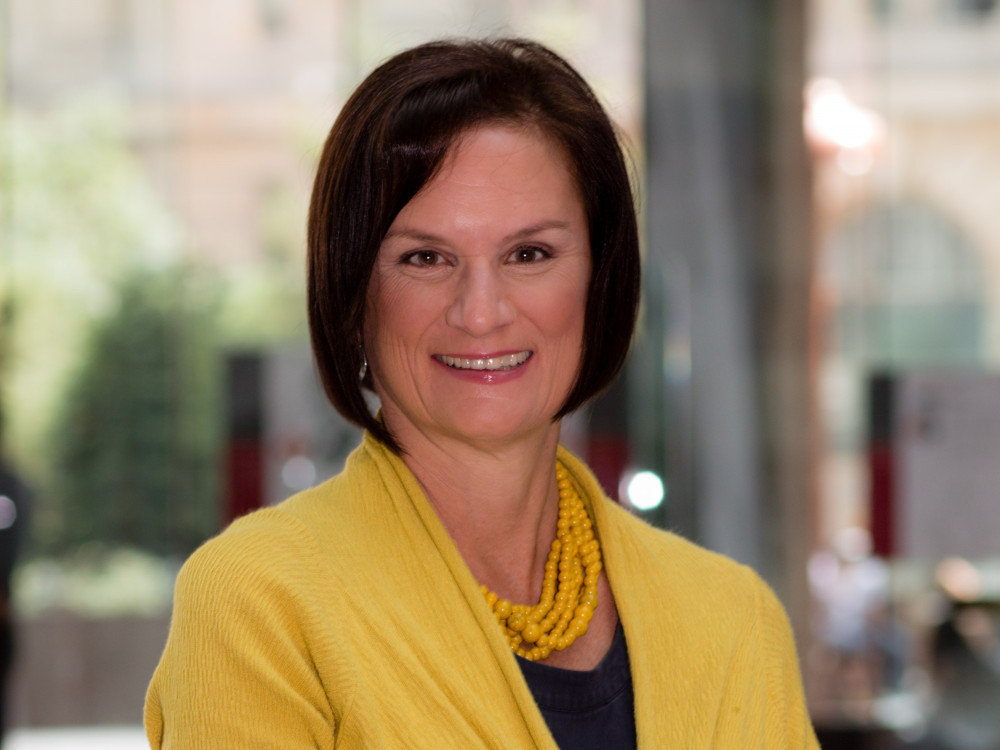Donor-advised funds are the fastest growing vehicle for charitable giving in Canada, and their popularity is no surprise to Jo-Anne Ryan, vice president of philanthropic advisory services at TD Wealth.
DAFs, as they’re called, help wealthy donors incorporate philanthropy into their financial and estate plans, she says, giving them a charitable legacy without the administrative complexities of establishing a private foundation.
Ryan learned about DAFs when she was working in the financial services industry, with a focus on estate planning, including philanthropy and planned giving. DAFs offered through financial institutions began in the United States in the 1990s and were finding success with organizations such as Fidelity, Vanguard and Morgan Stanley.
In 2003, Ryan approached TD suggesting that it become the first bank in Canada to offer a DAF, and she became architect of its Private Giving Foundation, launched in October of 2004. Today, she is executive director of the independent public charity, which has collected some $1.4 billion and sent out more than $800 million to support charitable causes. It comprises about 2,100 funds, with new accounts opening every week.
In Canada there’s some $11 billion in DAFs, she says, and that number is expected to grow steadily, according to research conducted by Keith Sjogren, formerly with Investor Economics.
Canadian Family Offices spoke with Ryan about this upward trend as well as who should be looking at setting up a DAF and what’s ahead in charitable giving in Canada.
How did TD feel about setting up a DAF?
It was a tough sell in 2003, because back then the core business of TD or any bank was investment management and banking. Philanthropy was considered a fluffy thing on the side. Today, thankfully, nobody in senior leadership at TD would argue against the importance of philanthropy for our high-net-worth and ultra-high-net-worth clients.
In private wealth management at TD, we have four pillars: build net worth, protect what matters, implement tax-efficient strategies and leave a legacy, which for many clients is a charitable legacy.
And philanthropy can help tick the other boxes, like tax efficiency?
Oh, yes. Tax is never the number one motivator in terms of why people give, but in Canada we have very generous tax incentives for charitable giving, compared with other countries. So we educate clients on the most tax-efficient ways to give, because then they can give more and have greater impact.
How does TD’s DAF work? People have their own DAFs or foundations within it, from which they make grants to charities?
That’s right. If you’re going to set up your own foundation, you typically go to a charities lawyer, set up a trust or a non-share capital corporation, then there’s an application to Canada Revenue Agency to get it registered. The family typically sits on the board and assumes all the fiduciary responsibilities of running a charity. With a DAF, you don’t have to go to a lawyer; we already have the public foundation established. In minutes you’re up and running.
And I can ask other people to contribute to it as well?
Yes, we call them third-party donors. Your friends or family can donate to your fund within the Private Giving Foundation. You decide the charities that get the grants, because it’s your fund, but they get the tax receipt.
What’s different between this and just sending money to charities?
This establishes a long-term legacy of giving. It can go on for generations, if that’s what you want. You can have your children named as successors, then continue that legacy of giving.
What we don’t like to see is people coming in at tax time with a shoebox full of receipts that represent a whole mishmash of different causes, because they’re being hit left, right and centre by 86,000 registered charities, and they’re just reacting.
What’s in it for TD?
We do the administration, so there are some fees involved. However, the whole point—and the number we are proud of—is the $800 million plus that has gone out to charities. That’s why we’re doing this.
And there’s also a benefit for clients?
When financial advisors have conversations with their clients about values that are important to them, what keeps them awake at night, what they’re worried about, it could be the air we breathe, it could be war, it could be a family member who’s battling some horrific disease. You’re not going to solve every problem with philanthropy, but you can certainly move the needle and make them feel like they’re doing something positive about something that’s bothering them. So you will strengthen the relationship.
So a DAF can consolidate giving?
If you take the time to do a philanthropic plan that reflects your values and give to just causes that you have determined are important to you and your family, then you can streamline your giving and have greater impact.
How do you feel about bringing DAFs to Canada and their importance in philanthropy?
I think I have the best job. I help people give money to charity and support things that are important to them. We educate people on all of the different ways to give, including the tax benefits, so they can give as tax efficiently as possible.
And we help them develop a philanthropic plan that reflects their values, so they’re just not haphazardly giving money because someone’s asking them.
We’re seeing charities having a lot more interest in DAFs, but they’re still not that widely understood.
Jo-Anne Ryan
What are some elements of DAFs versus private foundations to be aware of?
With a DAF you’ve given the money away irrevocably, and you get a charitable tax receipt. You don’t get it back. So you have to be comfortable with that. And you can only grant to qualified donees, which is mostly registered charities.
If you have your own foundation, you may grant to charities and you can also run charitable programs such as feeding the homeless or running a camp for underprivileged children, as long as your governing documents permit those activities. You can also charge expenses, within reason, related to the foundation’s philanthropy. You cannot charge any such expenses to a DAF.
On foundations, even though they’re called private foundations, they’re not private, because they have to file an information return every year. Then everybody can see how much money is in your foundation, charities you’ve given to, and who’s on your board. However if you look at the information return for TD’s Private Giving Foundation, you’ll see an aggregate, thousands of dollars going to thousands of charities, but you don’t know which fund the money is coming from.
Is there growing awareness of DAFs? And are they good for charities?
We’re seeing charities having a lot more interest in DAFs, but they’re still not that widely understood. I do a lot of training with investment advisors so they’re comfortable having the conversation about philanthropy.
There’s still a lot of work to do. In the U.S. they have a DAF day on October 9, and I’ve just joined a working group to see if we can get a DAF day here. And here’s why: DAFs are great for charities. When you open a DAF, your granting to charities doubles, because you’re more structured, you’re more organized, you’ve put some assets in this.
It sounds like you feel advisors should be promoting DAFs as a means of charitable giving.
Absolutely. People are proud of their DAFs. We have one client who’s made business cards with the name of his DAF. You can call it the Smith Family Foundation or the Smith Fund for the Arts or Save the Wales. We have all kinds of creative names.
Responses have been edited for clarity and length.
The Canadian Family Offices newsletter comes out on Sundays and Wednesdays. If you are interested in stories about Canadian enterprising families, family offices and the professionals who work with them, but like your content aggregated, you can sign up for our free newsletter here.
Get our new quarterly newsletter about philanthropy: Canadian Family Offices’ new newsletter brings you key insights, trends and expert perspectives on charitable giving, tailored to Canada’s wealth leaders and giving communities. Click here to subscribe now to stay ahead.
Please visit here to see information about our standards of journalistic excellence.




